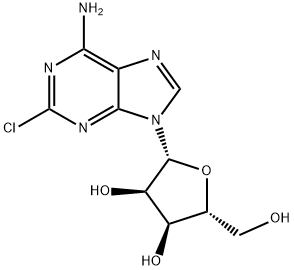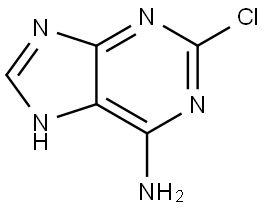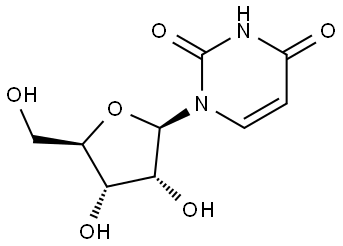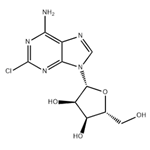Uses
2-Chloroadenosine is an adenosine analogue that is not hydrolyzed by adenosine deaminase. 2-Chloroadenosine increases the rate of dopa production in intact pheochromocytoma cells, it increases the content of cAMP in the cells, and it causes a stable activation of tyrosine hydroxylase, as measured in vitro. The action of 2-Chloroadenosine is not dependent upon extracellular Ca2+. In other experiments, we have found that 2-chloroadenosine increases the activity of adenylate cyclase in membrane fractions prepared from the pheochromocytoma. These data provide support for the hypothesis that 2-Chloroadenosine causes a cAMP-mediated phosphorylation of tyrosine hydroxylase in pheochromocytoma cells. Chromaffin cells and adrenergic neurons store and release adenine nuc1eotides together with catecho1amines. The adenosine formed by the hydrolysis of these nucleotides may be involved in the. physiological regulation of adenylate cyclase activity and of tyrosine hydroxylase activity. To date , however, we have no evidence for such a role of adenosine in normal chromaffin cells or in adrenergic neurons.
Chemical Properties
White to Off-White Crystalline Sold
Uses
A selective A1-adenosine receptor agonist. Induces apoptosis
Uses
2-Chloroadenosine is used as a selective A1-adenosine receptor agonist, and also Induces apoptosis.
Uses
Selective A1 adenosine receptor agonist. Since 2-chloroadenosine is not deaminated by adenosine deaminase and is less rapidly taken up by the brain than adenosine, 2-chloroadenosine led to more marked increase in CBF than adenosine.
Definition
A metabolically stable analog of adenosine which acts as an adenosine receptor agonist. The compound has a potent effect on the peripheral and central nervous system.
Biological Activity
Metabolically stable analog of adenosine that behaves as an adenosine receptor agonist (K i values are 300, 80 and 1900 nM for A 1 , A 2A and A 3 receptors respectively). Anticonvulsive in vivo .
Biochem/physiol Actions
2-Chloroadenosine is an analog of adenosine. It is an adenosine A1 receptor agonist. It might possess anti-oxidant property.
Pharmacology
2-chloroadenosine (2-CAdo) is an adenosine deaminase-resistant analogue of adenosine, widely used as an adenosine receptor agonist. This compound has been shown to induce apoptosis in several cell types either via activation of adenosine receptors or via intracellular metabolism. However, the molecular mechanisms of 2-CAdo-induced apoptosis are unclear. Here, we analyzed the effects of 2-CAdo in the leukemia cell line EHEB. 2-CAdo was found to induce apoptosis in EHEB cells, as shown by caspase-3 activation, DNA fragmentation, poly(ADP-ribose) polymerase (PARP) cleavage and phosphatidylserine exposure. Cytotoxicity of 2-CAdo was completely suppressed by 5-iodotubercidin, an adenosine kinase inhibitor, indicating that apoptosis induced by 2-CAdo was the result of its intracellular metabolism. Accordingly, we found that 2-CAdo was efficiently converted into 2-chloroATP. In parallel, a decrease of intracellular ATP concentration as well as a general inhibition of macromolecular synthesis, involving DNA, RNA and protein synthesis, was observed. Moreover, 2-CAdo induced cytochrome c release into the cytosol, indicating activation of the intrinsic pathway of apoptosis. This was found associated with a decline in Mcl-1 protein level and p53-independent. Inhibition of AMP deaminase by coformycin markedly prevented ATP depletion, and also significantly reduced 2-CAdo cytotoxicity and caspase-3 activation. In conclusion, our data show that intracellular metabolism of 2-CAdo can lead to activation of the intrinsic pathway of apoptosis and that ATP depletion, in addition to the accumulation of the triphosphate analogue, contributes to 2-CAdo-induced apoptosis.
Purification Methods
Purify 2-chloroadenosine by recrystallisation from H2O (~1% in cold), and it has max at 264 nm (pH 1 and 7) and 265 nm (pH 13) in H2O. [Brown & Weliky J Org Chem 23 125 1958, Schaeffer & Thomas J Am Chem Soc 80 3738 1958, IR: Davoll & Lewy J Am Chem Soc 74 1563 1952, Beilstein 26 III/IV 3725.]






